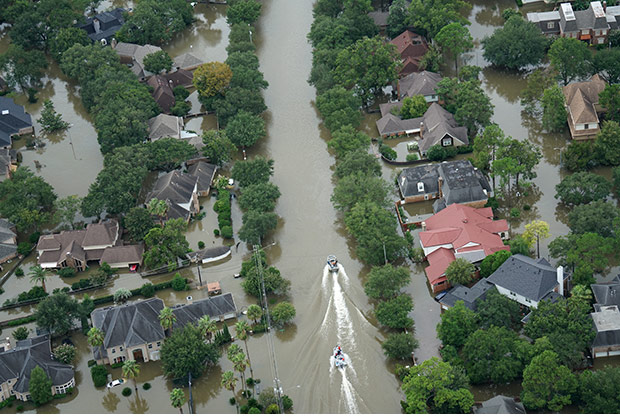Planning prof’s research reveals flaws in municipal hazard plans

Philip Berke
[Excerpt from] (http://today.tamu.edu/2018/02/01/texas-am-study-examines-hazard-mitigation-recovery-plans-for-coastal-cities/) [ ] (http://today.tamu.edu/2018/02/01/texas-am-study-examines-hazard-mitigation-recovery-plans-for-coastal-cities/)
[Read full story] (http://today.tamu.edu/2018/02/01/texas-am-study-examines-hazard-mitigation-recovery-plans-for-coastal-cities/)
Editor’s note: Texas A&M Today’s Elena Watts highlights new research by Philip Berke, professor of urban planning, that reveals critical shortcomings of many cities’ plans to deal with natural hazards.
Berke and other disaster experts reported their findings at recent meetings with U.S. Congress staff members and fellow research scientists in Washington, D.C.
BY ELENA WATTS
The field of urban planning is gaining interest as cities around the world, including nearby Houston, are facing increased exposure to weather-related risks and hazards ranging from sea level rise and flooding to temperature build-up and urban heat island effect.
Philip Berke, professor of landscape architecture and urban planning at Texas A&M University, recently completed a five-year research project that examined 175 hazard mitigation plans adopted by counties and municipalities along the Gulf of Mexico and the U.S. Atlantic and Pacific Northwest coastlines. These local governments are required by the Federal Emergency Management Agency (FEMA) to adopt such plans to be eligible for pre-disaster and post-disaster mitigation funds.
According to the study, hazard mitigation plans in cities such as Houston are weak and underfunded. The plans are isolated from broader decisions about the location, density and design of urban development.
[Read the full story by Elena Watts in Texas A&M Today.] (http://today.tamu.edu/2018/02/01/texas-am-study-examines-hazard-mitigation-recovery-plans-for-coastal-cities/)
Tags
- archone gallery
- building a better texas
- climate
- coastal systems
- enviro gallery
- hazards
- hrrc gallery
- land development
- land resources
- landscape architecture & urban planning
- laup gallery
- planning
- research
- sustainability
- urban systems
Related Posts

LAND profs propose series of “Ike Dike” enhancements

A&M researchers collaborate in U.S. resilience center

Planning prof presents hazard mitigation ideas

Study eyes how lower Lake Conroe levels impact economy
Follow Us
Facebook Twitter Vimeo Youtube Flickr RSS
Recent Posts

Planning prof heads study of disaster housing aid

A message from the dean

Former student remembered as expert planner

Leading educator named new head of Architecture Dept.






_thumbnail_small.png)
